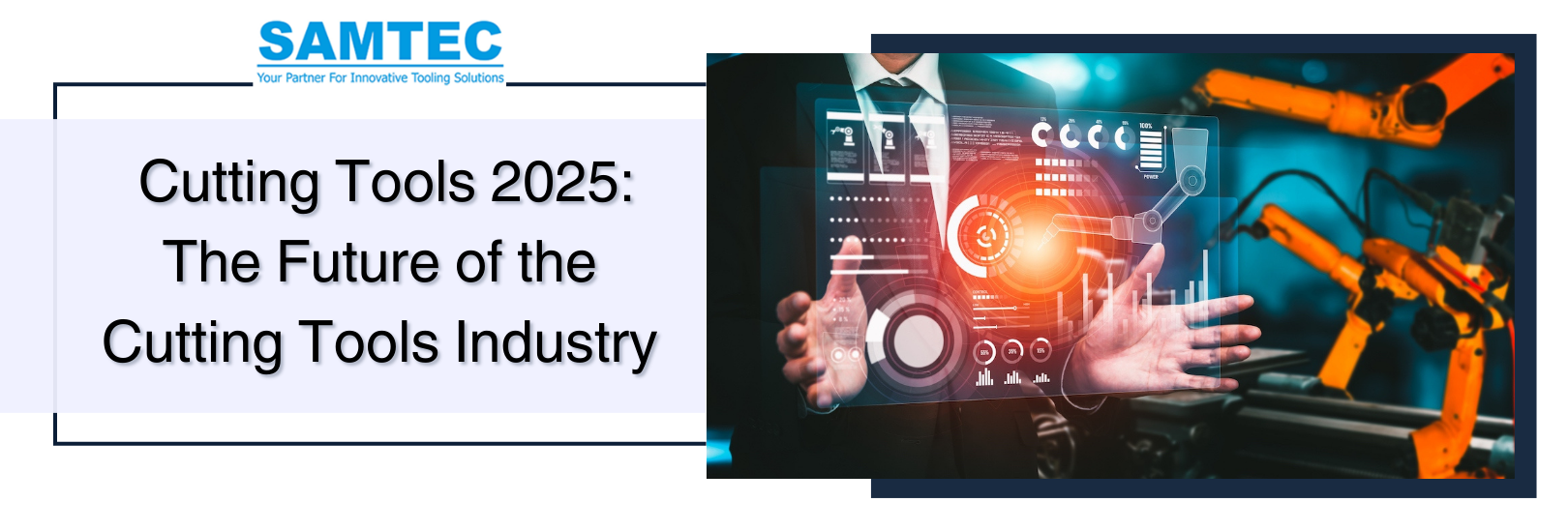
The cutting tools industry stands at a crossroads, poised for significant transformation driven by technological advancements, globalization, and economic shifts. As we look ahead to 2025, it is crucial to understand the key trends shaping the future of the cutting tools industry and how businesses can prepare to thrive in this evolving landscape.
Technology:
The cutting tools industry has always been at the forefront of innovation, constantly pushing the boundaries of what is possible. In the coming years, we can expect to see a continued focus on technological advancements, particularly in the areas of materials and manufacturing processes. Advanced materials such as cubic boron nitride (CBN) and nanocrystalline diamond coatings will offer enhanced durability and precision, leading to increased productivity and cost savings for industries relying on cutting processes.
Additionally, smart cutting tools equipped with sensors and data analytics capabilities will revolutionize the industry by enabling real-time monitoring and optimization of cutting processes. These intelligent tools will improve accuracy, reduce downtime, and enhance overall efficiency, driving significant value for businesses.
Artificial Intelligence (AI) and Machine Learning:
Artificial Intelligence (AI) and Machine Learning are revolutionizing the cutting tools industry by enabling the development of intelligent cutting tools. These tools can monitor their own performance in real-time, analyze data, and optimize cutting processes autonomously. AI-powered cutting tools can adjust cutting parameters to improve precision, efficiency, and productivity, thereby reducing downtime and maintenance costs, leading to increased operational efficiency and cost savings.
Additive Manufacturing (3D Printing):
Additive Manufacturing (3D Printing) is transforming the cutting tools industry by allowing the production of complex tool geometries that were previously impossible with traditional manufacturing methods. 3D printing enables the creation of customized cutting tools tailored to specific applications, improving performance and efficiency. New tool designs can be quickly prototyped and tested by manufacturers, which shortens the development period. On-demand production and small batch manufacturing reduce waste and cost, offering greater flexibility and cost-effectiveness.
Internet of Things (IoT) Integration:
Integration of the Internet of Things (IoT) enables cutting tools to collect and transmit data on performance, wear, and maintenance needs. This data allows for predictive maintenance strategies, reducing downtime and maintenance costs. Real-time monitoring and control of cutting processes improve efficiency and productivity. IoT-enabled cutting tools can optimize tool usage and minimize downtime, leading to increased operational efficiency.
Enhanced Materials and Coatings:
Manufacturers are developing new materials and coatings with superior hardness, toughness, and wear resistance, revolutionizing the cutting tools industry. Advanced coatings like diamond-like carbon (DLC) and nanocomposite coatings reduce friction and improve tool performance. These materials and coatings enable cutting tools to tackle more challenging materials and operate at higher speeds, leading to increased productivity, cost savings, and extended tool life.
Automation and Robotics:
Automation and robotics are transforming manufacturing processes in the cutting tools industry. Robotic machining centers and CNC systems offer high precision and repeatability, enhancing productivity. Integration of cutting tools with automated systems improves efficiency and reduces the need for manual intervention. Autonomous robotic cutting systems can adapt to changing production demands, further enhancing productivity and efficiency.
Globalization:
The globalization of the cutting tools industry will continue to accelerate, driven by the growing demand for manufacturing in emerging economies and the increasing collaboration among businesses worldwide. This trend will result in a more diverse and competitive talent pool, requiring organizations to adopt innovative strategies for talent acquisition and retention.
Economics:
Economic indicators point towards a positive outlook for the cutting tools industry, with growth expected in sectors such as aerospace, automotive, and energy. This growth will create opportunities for businesses to expand their market presence and capitalize on emerging trends.
The future of the cutting tools industry is bright, with technological advancements driving significant opportunities for innovation and growth. By embracing AI, 3D printing, IoT integration, enhanced materials, and coatings, and automation and robotics, businesses can position themselves for success in 2025 and beyond.
Summary:
In conclusion, the future of the cutting tools industry is marked by significant advancements in technology, materials, and processes. Artificial Intelligence (AI) and Machine Learning are revolutionizing cutting tools, while Additive Manufacturing (3D Printing) enables the production of complex tool geometries. The Internet of Things (IoT) integration allows for real-time monitoring and predictive maintenance. Enhanced materials and coatings enhance tool performance, and Automation and Robotics improve manufacturing processes.
Copyright © 2025 Samtectools
Best viewed in IE 10+, Firefox 20+, Chrome , Safari5+, Opera12+